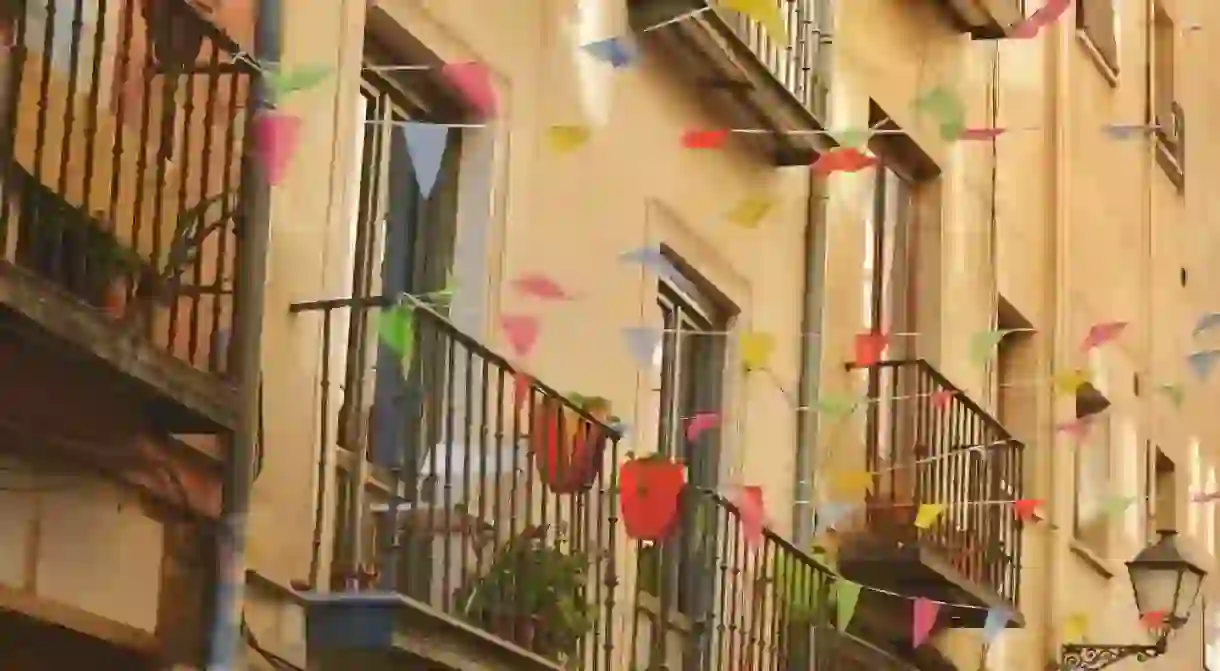The 10 Best Things to See and Do in Malasaña, Madrid

There’s more to the Madrid art scene beyond the Prado and the Reina Sofia. Retro bars, buzzy terraces and bags of history make Malasaña the top neighbourhood for arty establishments and a hip cultural scene. Whether you like your art on bar walls or inside churches, keep this guide handy for your next visit to the Spanish capital.
If you’re looking for hipster cafes, vintage clothes boutiques and excellent street food, Malasaña will not disappoint. This creative neighbourhood was the birthplace of La Movida, the 1980s post-Franco countercultural wave, and is now home to a thriving alternative scene. Discover what to do in one of the coolest areas of Madrid with this guide.
Dine at La Tasquita de Enfrente
Restaurant, Spanish

Tour the Plaza de España
Architectural Landmark

Located at the lively nexus of Gran Vía and Calle Princesa, Plaza de España is one of the largest squares in the Spanish capital. It’s overlooked by two of the city’s tallest buildings – the rectangular Torre de Madrid and the more boxy Edificio España, both of which were constructed in the 1950s and are now hotels. On the plaza itself you’ll find dainty ponds, landscaped gardens and a monument portraying writer Miguel de Cervantes and his two greatest creations, Don Quixote and Sancho Panza.
Look inside the Iglesia de San Antonio de Los Alemanes
Church
The somewhat dull exterior of this 17th-century church belies what’s hidden within: covering its interior walls and ceiling are some of the most colourful frescoes in Madrid. They’re the work of two leading late-baroque court painters, an Italian phenomenon named Luca Giordano, whose speed of working earned him the nickname Luca Fa Presto, or Luca Paints Quickly, and Francisco Ricci, one of the first artists in Spain to paint in the baroque style. The ornate altars were added in the 18th century.
Watch a play at Teatro Victoria
Theater
The intimate Teatro Victoria specialises in contemporary versions of classic plays, stand-up comedy and children’s shows. Large-scale spectaculars such as Victor Hugo’s Les Misérables are imaginatively reworked for a small stage and feature some of the Spanish capital’s most promising talent. When the curtain comes down, walk for five minutes to Calle de Fuencarral for good drinking and dining options as you critique the night’s performance.
Make friends on the Plaza del Dos de Mayo
Architectural Landmark

Spacious terraces can be hard to find in central Madrid, but there are several on Plaza del Dos de Mayo, arguably Malasaña’s most sociable square. It’s named after the tumultuous events of 2 May 1802, when Madrileños resisted the invading forces led by Napoleon, and at its centre are monuments to two military leaders who died in the (ultimately unsuccessful) rebellion. The statues are surrounded by playgrounds and terraces that fill up quickly in the evenings and at weekends – Cafe Tatiana has one of the best.
See Mauro Entralgo’s Mural at TupperWare
Bar, Spanish
Linger at the Mercado de San Ildefonso
Market, Spanish
It’s hard to imagine this warehouse-style food hall existing anywhere else than Calle de Fuencarral, Malasaña’s trendiest street. Spread over two floors of exposed pipes, subway tiles and neon signage are stalls offering Spanish, Mexican and Korean food, two bars serving cocktails and international beers and ciders and a wine specialist . Yet it’s the semi-covered terraces that make this a place to linger late into the evening – there’s one on the ground floor and another in between the ground and first floors.
Explore the Palacio de Liria
Architectural Landmark, Historical Landmark

The neoclassical Palacio de Liria, hidden behind forbidding iron gates and meticulously pruned trees, was built between 1767 and 1785 for the Alba family, one of Spain’s oldest and wealthiest families. It was almost completely destroyed by fires during the Spanish Civil War (1936-1939). Miraculously, most of its treasures were rescued, including paintings by Goya, El Greco, Velázquez and Rubens. An audio guide featuring classical music and voice actors playing bygone aristocrats brings the palace to life.
Visit the Museo Municipal de Arte Contemporáneo
Museum
Find retro heaven at Madklyn
Bar, Spanish, European, Wine, Beer, Cocktails














